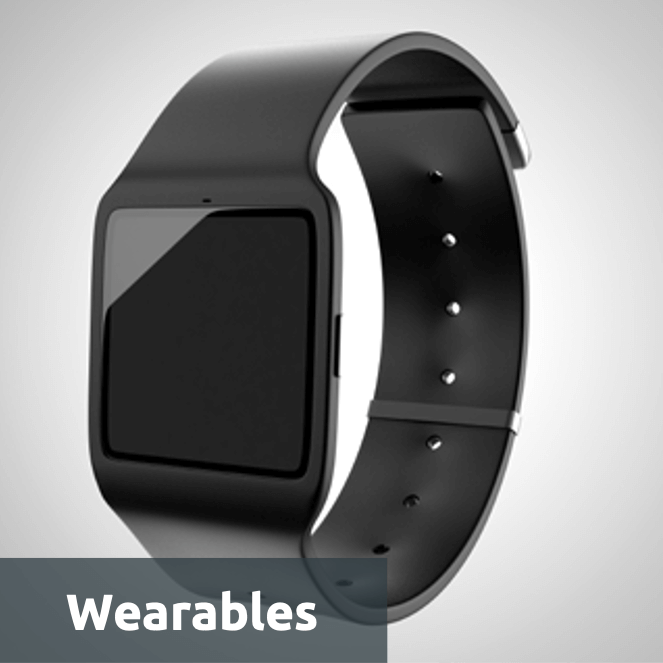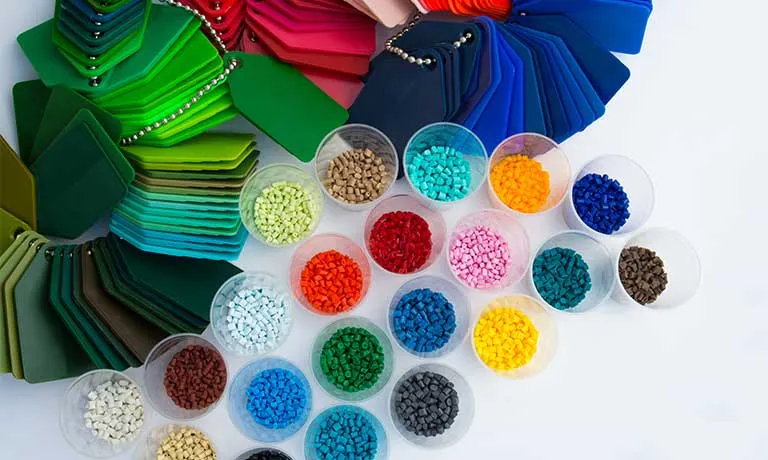There's a lot of information swirling around the internet about thermoplastic elastomers (TPEs) and similar materials such as TPU, TPV, and silicone. In fact, you may have found yourself swimming in plastics alphabet soup and unsure where to start. We've put together this comprehensive guide to all things TPE to help unravel the details about these versatile and popular materials.
A Beginner’s Guide to TPE
Thermoplastic Elastomers (TPEs)

TPEs: The Basics
What are TPEs?
Thermoplastic elastomers (TPEs) are a type of plastic that have been refined to create a soft, rubbery feel—and they’re everywhere. TPE is common in household objects, like the grip on your toothbrush, the soft lid of a sippy cup, your dog’s chew toy, and cellphone cases.
What’s the difference between TPEs and silicone or rubber?
Often, TPEs are compared to a rubber or silicone. It can be difficult to determine whether a material is TPE, silicone or rubber simply by look and feel. At the scientific level, rubber and silicone are both thermoset materials, meaning once the material is molded it is “set” and cannot be broken down to be molded again. Thermoplastics, on the other hand, can be reformed and reset over and over again using heat. In many cases, TPEs are chosen for products over rubber because of their flexibility, versatility and recyclability.
What can you make out of TPEs?
The innovative possibilities of TPEs are nearly infinite. Anything you touch that feels like a soft plastic or has a rubbery surface can be made from TPEs—everything from a gearshift knob in your car and the handles on your power tools to medical tubing and syringe stoppers.


Are there different kinds of TPEs?
Yes, there are several types. You may hear people talk about TPVs (thermoplastic vulcanizates) or TPUs (thermoplastic polyurethane) instead of TPEs. In reality, TPVs and TPUs are both types of TPEs, and are two of the most common. Other common types of TPEs are TPR (thermoplastic rubber) and S-TPEs (styrenics).
While TPEs are useful in their basic form, they are often blended with other materials to make a new kind of TPE (like TPVs and TPUs) to produce the ideal properties for a specific application. In fact, some blends are so unique to the client’s needs that the blend becomes proprietary. Because the material has never been combined or processed in this precise way, the “recipe” becomes a trade secret that the manufacturer saves for future use cases.
Are TPEs Right for My Product?
The best way to determine if thermoplastic elastomers are right for your use case is to discuss your needs with an application development expert. To help you identify the right materials for your product, they will need to know:
- the kind of environment in which your product will be used
- what kind of properties you need (e.g., stretchy, hard or soft, color)
Is TPE the best material for my products?
It greatly depends on your industry and application. There are commonly known blends, such as material for a phone case or a fitness wearable. In more complex cases, the application development expert will relay your needs to material scientists, who create a specific formula and blend of materials to generate the properties you need. Unless you are a polymer expert, it’s challenging to know which type of TPE is the best fit for your use case. Application design experts can recommend a TPE based on a general description of the desired product and the material properties your application requires.

When should I consider using TPEs?
In general, TPEs are recommended when you need a material that can be:
- easily manufactured
- bonded to rigid polymers
- molded into a unique design
- colored
- produced to a specific hardness, toughness or surface feel requirement
- recyclable
- chemical resistant or fire retardant
- noise and vibration dampening
One of the first things to consider is the necessary hardness for your application. The versatility of TPEs enables production along a full spectrum of hardness levels, from the consistency of a gummy bear to that of a bowling ball. Another important consideration is the surface feel and amount of friction. Some products call for a grippy surface, like the handle of a fishing pole. Others require a smooth, nearly frictionless feel, like a phone case that you want to easily slip in and out of your pocket. You may also need to think about how you want the product to behave when stretched; there are many stretch properties and tests that can be performed to achieve the appropriate amount of flexibility based on your application.

What are the main advantages of using TPEs?
TPEs are often chosen over similar materials like rubber or silicone for several reasons. One of the most commonly cited advantages of TPEs is the ability to produce products via high-volume injection molding, which is an extremely cost-effective process. This means a large volume of product (anywhere from tens of thousands to over a million units) can be created by heating the TPE blend and injecting it into a mold, where the TPEs cool and form the desired shape. Working with TPEs also gives you extensive design freedom, customization and color options.
Are there any disadvantages to TPEs?
If thermoplastic elastomers can do all this, you might be asking yourself, “Is there any reason I wouldn’t want to use TPEs?” For one, you can’t put a product or device made with TPEs in the oven at 400 degrees Fahrenheit (F), which you can do with silicone. Thermoset materials like natural rubber and silicone can retain their properties in both hot and cold (down to -100 degrees F) environments, and under extreme pressure. Additionally, thermoset materials can have more chemical and oil resistance, so they may be more suitable than TPEs for applications such as a part under the hood of a car.
TPE Quick Facts
How are TPEs made?
In the simplest terms, traditional TPE types are made by combining a hard material with a soft material, either chemically or by a machine.
Are TPEs safe?
Yes, they are safe enough to make sippy cups and healthcare products like medical tubing. If needed for the application, TPEs can even be formulated for fire retardant performance. The material is not allergenic and does not cause rashes. Most TPEs fall into the Food and Drug Administration’s Generally Recognized as Safe (GRAS) category.
Are TPEs waterproof?
Yes, TPEs can be blended in a way that makes the material absolutely waterproof. In fact, TPEs are often used for the gasket that keeps portable speakers and other electronics safe from water damage. But here’s a twist—TPEs can also be designed to absorb water if that is a desired property for your application.

Can you color TPEs?
Yes, you can color TPEs and this is a main advantage. Because their natural color is usually cream, white, beige or translucent, TPEs are very easy to color. Black, blue and clear are popular options, but there is almost no limitation on color when it comes to using TPEs.
Can you melt TPEs?
If we’re being nuanced, thermoplastic elastomers don’t technically melt. Once heated, TPEs get softer and turn into a form that allows the material to flow freely, but they don’t turn into a liquid state as is the case when something is melted. This ability to flow freely in a near-melted state is an important property because it allows TPEs to be molded into any shape you want.
Are TPEs chemically resistant?
The short answer is that it depends. TPEs can be formulated to be chemically resistant and customized to meet demanding application needs. Understanding the chemical resistance of TPEs comes down to the final formulation.
What are medical grade TPEs?
Not surprisingly, the healthcare market has additional regulatory requirements for those creating medical products and devices. Because producing TPEs is a very controlled and precise chemical and manufacturing process, you can make TPEs for different levels of risk and medical grades.
For example, the process for creating a medical product that goes in your mouth would include a step to make sure patients aren’t consuming or inhaling anything harmful. Medical tubing made from TPE is likewise formulated from a medical grade that withstands various fluids without degrading.

The good news is that medical grade TPEs can be made at whatever level is necessary for the product and/or application. Risks are mitigated during the entire production process to create different medical grades. The more stringent the requirements are, the more scrutiny and testing is involved during TPE creation.
Diving Deeper into TPEs
Are TPEs eco-friendly?
There are several reasons TPEs are a more eco-conscious option than thermoset materials like rubber or silicone. Thermoplastic itself means “the ability to be reprocessed by heat.” Because of this, scrap materials during the manufacturing process can be reused. Or, if a product is made incorrectly or needs to be adjusted during the prototyping phase, it can simply be heated again and reshaped, creating no waste. With thermoset materials like a rubber tire, the options are much more limited. Sure, you can grind up a tire into a material for the track around a high school, but the material itself can’t be changed or transformed into a completely new and recyclable product.
Repurposing and recycling
You can also make TPEs out of biopolymers, which are natural polymers produced by the cells of living organisms. For example, other plastics made out of natural resources such as sugar cane can be repurposed into TPEs to create new products. TPEs can also be made from post-consumer recycling like ocean plastic (e.g., fishing nets) and turned into material for other goods. Most thermoplastic elastomer products are also recyclable under Plastic Recycling Code 7.
Lightweighting
Thermoplastic elastomers are also used to make products more lightweight. Because silicone will sink, TPEs are a better option if your application requires the material to float. Additionally, automotive parts and devices made from TPE make vehicles lighter and more fuel efficient. Glass or other heavier materials can be replaced with a lighter, TPE-made product so you can fit more inventory on delivery trucks. This reduction in weight allows trucks to move with greater fuel efficiency, and fewer trucks are needed on the road in general.
Taking the Next Steps
More technical and detailed information on thermoplastic elastomers can be found on our TPE Knowledge Center and TPE FAQ page. The most efficient way to discover whether TPEs could work for you, or which kind of TPE is best for you, is to speak with the experts directly. At Avient, we use a collaborative approach to deliver the specialty polymer formulations, services and sustainable material solutions specific to your application and property needs. In fact, our mission is to solve the world’s most complex material science problems, and we’re here to support you all the way from research and development through production. Contact us today.

